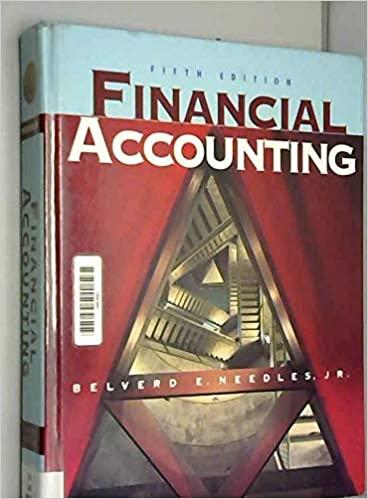

Special Order Total cost data follow for Glendale Manufacturing Company, which has a normal capacity per period of 8,000 units of product that sell for $60 each. For the foreseeable future, regular sales volume should continue to equal normal capacity. Direct material $100,800 Direct labor 62,400 Variable manufacturing overhead 46,800 Fixed manufacturing overhead (Note 1) 38,400 Selling expense (Note 2) 35,200 Administrative expense (fixed) 15,000 $298,600 Notes: 1. Beyond normal capacity, fixed overhead costs increase $1,800 for each 500 units or fraction thereof until a maximum capacity of 10,000 units is reached. 2. Selling expenses consist of a 6% sales commission and shipping costs of 80 cents per unit. Glendale pays only three-fourths of the regular sales commission on sales totaling 501 to 1,000 units and only two-thirds the regular commission on sales totaling 1,000 units or more. Glendale's sales manager has received a special order for 1,200 units from a large discount chain at a price of $36 each, F.O.B. factory. The controller's office has furnished the following additional cost data related to the special order: 1. Changes in the product's design will reduce direct material costs $1.50 per unit. 2. Special processing will add 20% to the per-unit direct labor costs. 3. Variable overhead will continue at the same proportion of direct labor costs. 4. Other costs should not be affected. a. Present an analysis supporting a decision to accept or reject the special order. (Round computations to the nearest cent.) 1. Beyond normal capacity, fixed overhead costs increase $1,800 for each 500 units or fraction thereof until a maximum capacity of 10,000 units is reached. 2. Selling expenses consist of a 6% sales commission and shipping costs of 80 cents per unit. Glendale pays only three-fourths of the regular sales commission on sales totaling 501 to 1,000 units and only two-thirds the regular commission on sales totaling 1,000 units or more. Glendale's sales manager has received a special order for 1,200 units from a large discount chain at a price of $36 each, F.O.B. factory. The controller's office has furnished the following additional cost data related to the special order: 1. Changes in the product's design will reduce direct material costs $1.50 per unit. 2. Special processing will add 20% to the per-unit direct labor costs. 3. Variable overhead will continue at the same proportion of direct labor costs. 4. Other costs should not be affected. a. Present an analysis supporting a decision to accept or reject the special order. (Round computations to the nearest cent.) Differential Analysis Per Unit Total Differential revenue $ 43,200 Differential costs Direct material $ 11.1 Direct labor 9.36 Variable manufacturing overhead 7.02 Selling: Commission 1.44 Shipping (F.O.B. factory terms) 0 Total variable cost $ 28.92 34,704 Contribution margin from special order 8,496 Fixed cost increment: Extra cost 5,400 Profit on special order $ 3,096 b. What is the lowest price Glendale could receive and still make a profit of $3,600 before income taxes on the special order? Round answer to two decimal places, if applicable. $ 36.44 x








